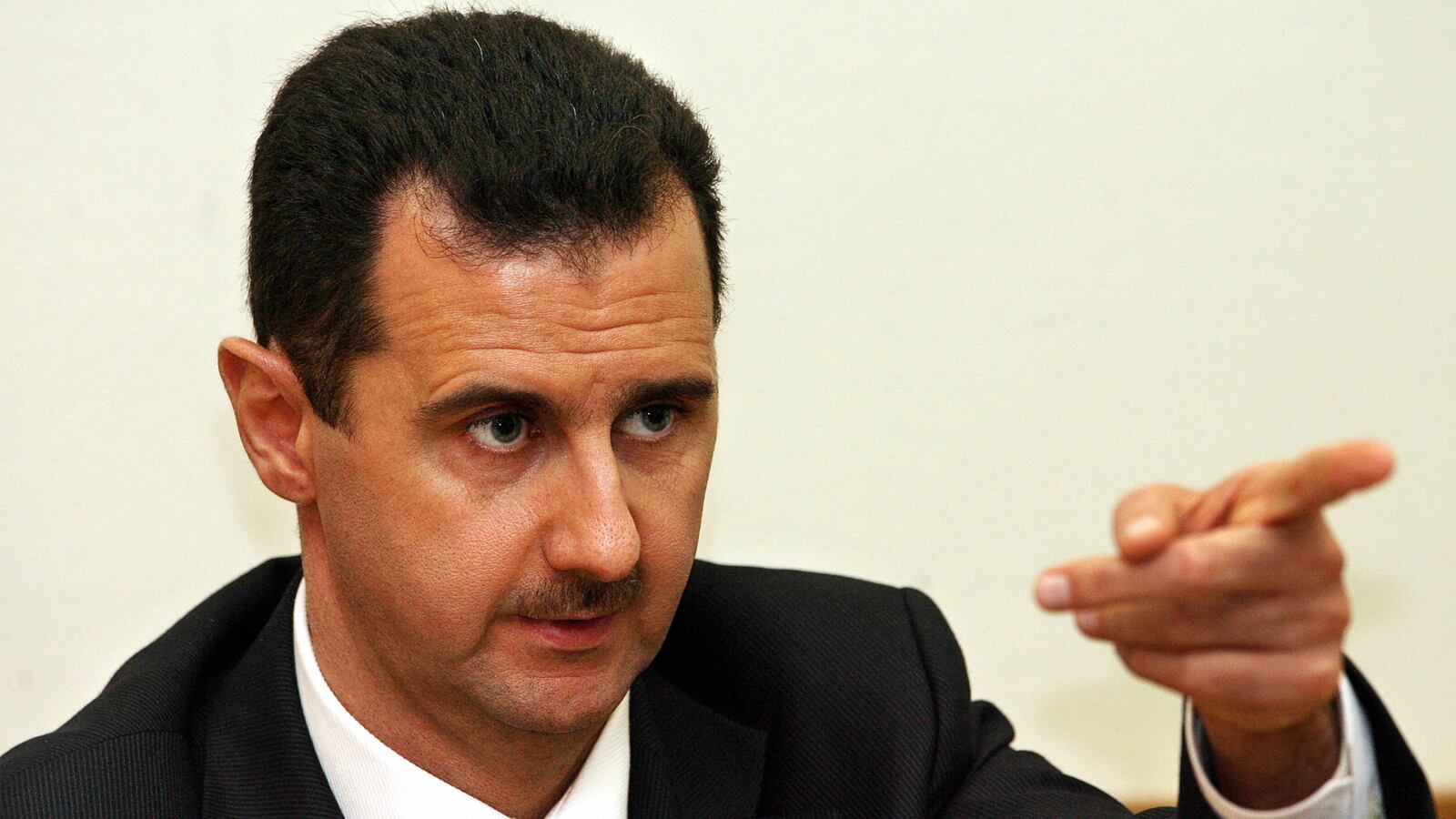There’s one person ecstatic about the Iran deal and Washington would probably prefer he just keep his mouth shut: Syrian dictator Bashar al-Assad. Professing in a cable to Supreme Leader Ayatollah Ali Khamenei that the newly agreed upon nuclear accord between the world’s major powers was a “historic achievement,” Assad went on to note his satisfaction that this would only strengthen Iran’s work for “peace and stability…in the region and the world.” Translation: Iran will further finance and militarily bolster Assad’s crumbling regime, not to mention other affiliates and proxies.
In crafting a largely technical arms control agreement, the U.S. has therefore objectively empowered its traditional enemies—the so-called “Axis of Resistance”—at the expense of its traditional allies, the Sunni-led Gulf States and their satellites, in what may prove to be a new age of deadly sectarian wars in the Middle East, of which Syria, Iraq, and Yemen are only a foretaste. As ever in geopolitical wrangles, it’s civilians who stand to suffer first and most severely.
Consider Iranian support for Assad thus far. The U.N. special envoy for Syria, Staffan de Mistura, estimated last month that Iran has spent between $6 billion and $35 billion per year to keep its ally afloat and in an active state of war. Just days ago Damascus ratified a $1 billion credit line from Tehran. The mullahs have also been caught sending oil to Syria that is more or less “free” because there’s no expectation that Assad will ever be in a position to repay the loans Iran extended to it to buy the stuff in the first place. And all this support has transpired under a still-active and robust international sanctions regime.
Indeed, nothing in the detailed, 100-page arms control agreement addresses the knock-on effect of Iranian sanctions relief: namely, where as much as $150 billion in freed-up money will now wind up?
The Obama administration is hopeful that the Iranians will use the windfall to build schools, hospitals, and roads. But there’s an excellent chance that at least a healthy chunk of it will go to two U.S.-designated terrorist entities: the Islamic Revolutionary Guards Corps-Quds Force (IRGC-QC) and its proxy Lebanese Hezbollah, both of which are now in effect running Assad’s scorched-earth warfare. Naame Shaam, a citizens’ journalist collective, has argued in a series of research reports that Iran is technically an “occupying force” in Syria, so extensive is its military intervention in the country. What’s more, the IRGC-QF is guilty of orchestrating numerous war crimes against the Syrian people, including ethnic cleansing.
Much of Iran’s funding in Syria has gone toward arming predominantly Shia proxies—notably the so-called National Defense Force, an IRGC-QF-built super-militia—which fight Sunnis on behalf of Assad. An outgrowth of the sectarianism inherent in the Iranian and Syrian regime’s counterinsurgency has been ISIS, which draws thousands of Sunnis seeking to shield themselves from what they view as Shia jihadists.
“Under this deal the United States is providing the revolutionary Iranian regime with an economic lifeline to expand its nuclear program over time, rescue its economy, build immunity against future economic pressure and enable Iran to spend billions of new dollars on keeping the vicious sectarian wars of the Middle East as Iran expands its regional influence,” said Mark Dubowitz, the executive director of the Foundation for Defense of Democracies, which has been highly critical of the Iran rapprochement. “This will only work to the advantage of the most extremist elements like Assad, ISIS, Hezbollah, Iraqi Shiite militias, and the Iran revolutionary regime itself.”
To an extent, Hezbollah’s Secretary-General Hassan Nasrallah agrees with this assessment. In May, well before a deal was struck, Nasrallah said that IRGC-QF beneficiaries like his were sure to see a slice of the action after Iran sanctions were relaxed or lifted: “If Iran gets back this money, what will it do with it? A rich and strong Iran…will be able to stand by its allies and friends, and the peoples of the region, especially the resistance in Palestine, more than in any time in the past.”
These facts, analysts and Syrian dissidents say, complicate President Obama’s assertion today that the deal will reduce the likelihood of war in the Middle East. On the contrary, they argue, it may inadvertently escalate a pre-existing one which has so far precipitated the worst humanitarian crisis of the 21st century, with over 300,000 dead, and half the population either externally or internally displaced.
“The deal with world powers does not address Iran’s terrorist activities in the region carried out by its proxies in Syria, Lebanon, Iraq, and Yemen,” the Syrian National Coalition, the Western-backed opposition group, said in a statement today. “In Syria, Iran is offering a lifeline to Assad by providing arms, financing, training, and paying monthly salaries for Afghans and other foreign Shia mercenaries coming to Syria to fight for Assad. Iran is almost certainly going to use the newly available cash and bolstered economy to prop up its proxies and try to assert its hegemony in the region, causing more conflict and bloodshed.”
Tellingly, Obama didn’t mention Syria once in his White House press conference today—an ominous sign, according to Frederic Hof, a Senior Fellow at the Washington D.C.-based Atlantic Council and a former State Department policy planner on Syria under the current White House. “The administration decided not to table Tehran support for Assad’s mass homicide in Syria,” Hof said. “Now that the nuclear agreement has been reached, it is essential for the U.S. to pivot immediately to civilian protection and political transition in Syria.”
Moreover, Assad’s brutal attacks against civilians, including the use of barrel bombs, are “marvelous recruiting tools” for ISIS, Hof added, particularly among Syrians desperate for protection and young Sunnis around the world who see the terror group as the only alternative to regime-sanctioned brutality.
Andrew Tabler, a Syria specialist at the Washington Institute for Near East Policy, pointed out that the “optics” of the deal are terrible for Washington’s stalled effort to broker a compromise with the regime which would, as Obama has repeatedly indicated, see Assad’s ouster. “A deal between the U.S. and Iran only reinforces the narrative to the opposition that the U.S. is secretly in league with Iran against the Syrian Sunni majority population,” Tabler said. “The concern now is that this may launch a fake political process, one that purports to deal with the conflict but just ends up giving more concessions to the Assad regime and Iranians in Syria. That’s hardly something the Sunni allies will go along with.” Assad, Tabler added, remains confident that he can win the war outright and this deal will only make him more so.
“By gutting economic sanctions, going forward I think it is going to be very difficult to discourage Iran from providing significant support to Assad,” FDD’s Dubowitz said. “From Assad’s perspective having his primary patron no longer under sanctions means the [Iranian] regime no longer must painful choices” between funding its domestic needs and Assad’s.
Another issue being scrutinized by Syria watchers is the lifting of an international arms embargo on Iran, something that was never meant to be part of the nuclear negotiations—just as Iran’s state sponsorship of terrorism or its ongoing support for murderous regimes weren’t. But now, thanks to deft eleventh-hour negotiating by the Iranians, Tehran will see the U.N.-imposed ban on its conventional weapons lifted in five years and the one on its ballistic missiles lifted in eight—assuming it complies with the rest of the deal.
According to Oubai Shahbandar, a former Pentagon official who now serves as communications adviser to the Gulf-based television network Orient Media, the scaled lifting of the arms embargo “will wreak massive devastation on the Syrian civilians who seem to have been sacrificed as ‘collateral damage’ to this deal. The Iranian-designed and -produced Falaq-1 and Falaq-2 rockets proliferated to Assad were modified to carry chemical weapons and were the delivery vehicles for the 2013 sarin gas attack. Iran just received a blank check for its deadly activities in Syria.”
U.S. Secretary of State John Kerry, who is largely the architect of the Iran deal, more or less conceded the points being made by these critics by saying that it’d be an “enormous mistake” for Iran to use the revenue and phased-out arms embargo to further destabilize the region. How that mistake would be punished, however, given the reluctance of world power to unspool a hard-won nuclear compact, he did not clarify.
Perhaps the most agonized response to the Iran deal came from a Syrian blogger who writes under the nom de plume Maysaloon. In a searing post taking aim at “pan-Arabists of the Middle East” and progressives cheering a triumph for international diplomacy, he wrote: “I am thinking about a young Syrian boy I shook hands with in Turkey. Well, we didn’t shake hands. He shook my hands, I shook the stump of his arm because his hands were blown off by a Syrian regime missile strike. The Iranian deal means more bombs, more bullets, and more militias will be sent to Assad, and the easing of sanctions means more money will be used to prop up his economy and keep him in power. That’s why I’m not enthusiastic about the deal with Iran. That’s why I’m angry and biased. I don’t know, maybe I’m not thinking straight; I’m too ‘emotional.’”







